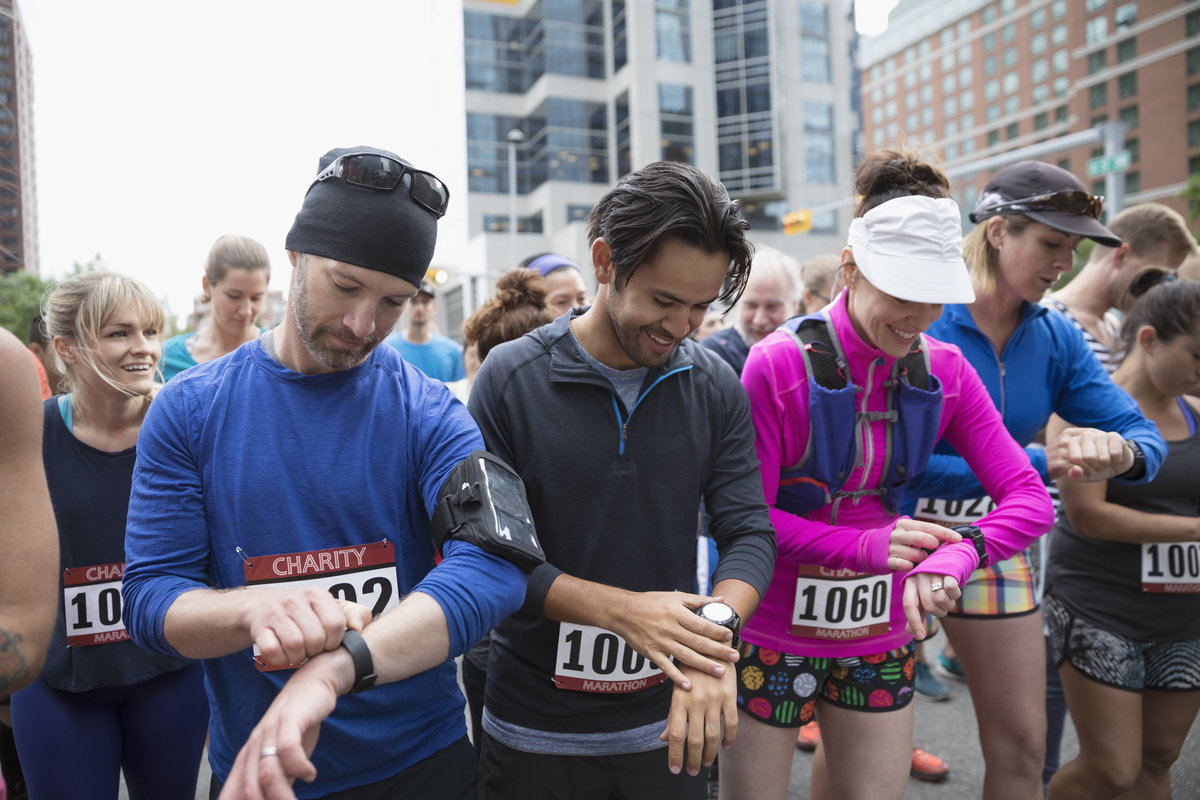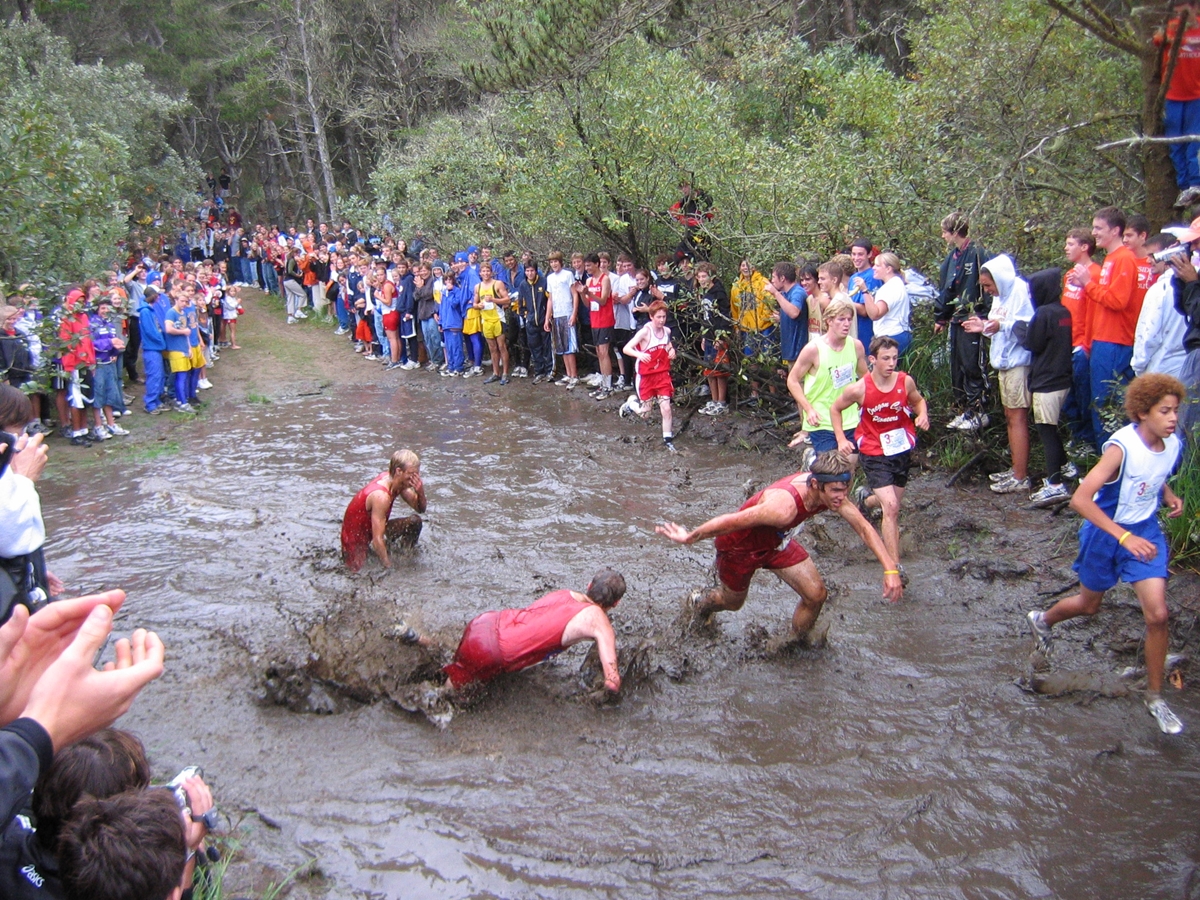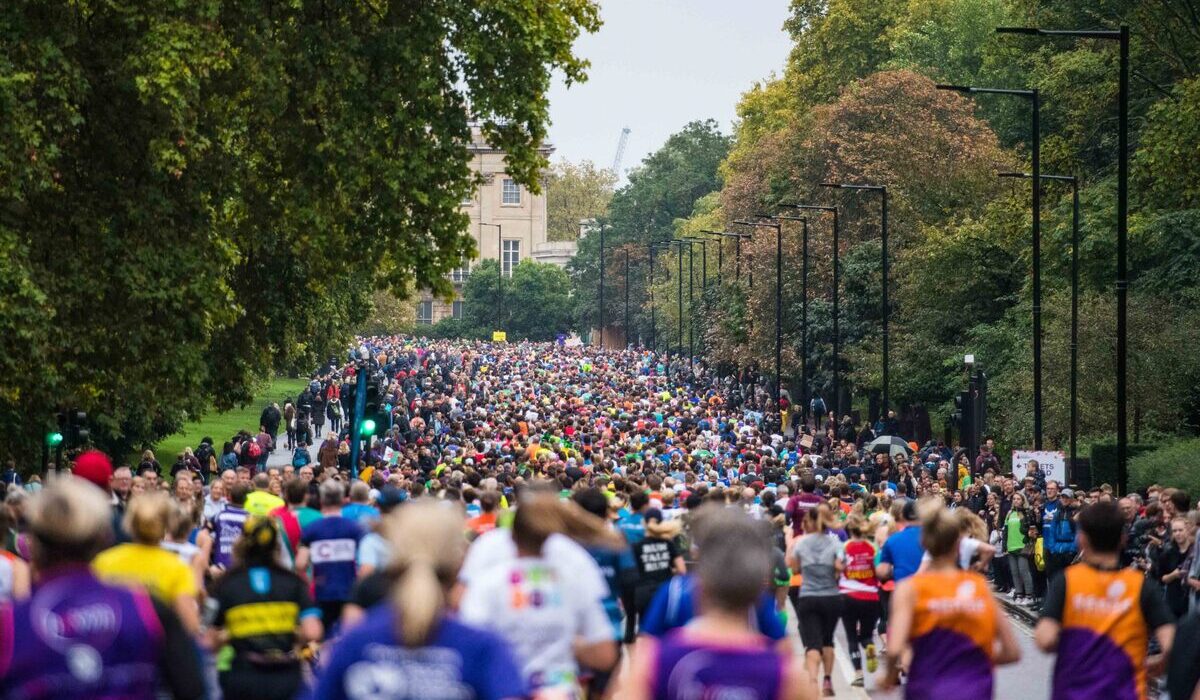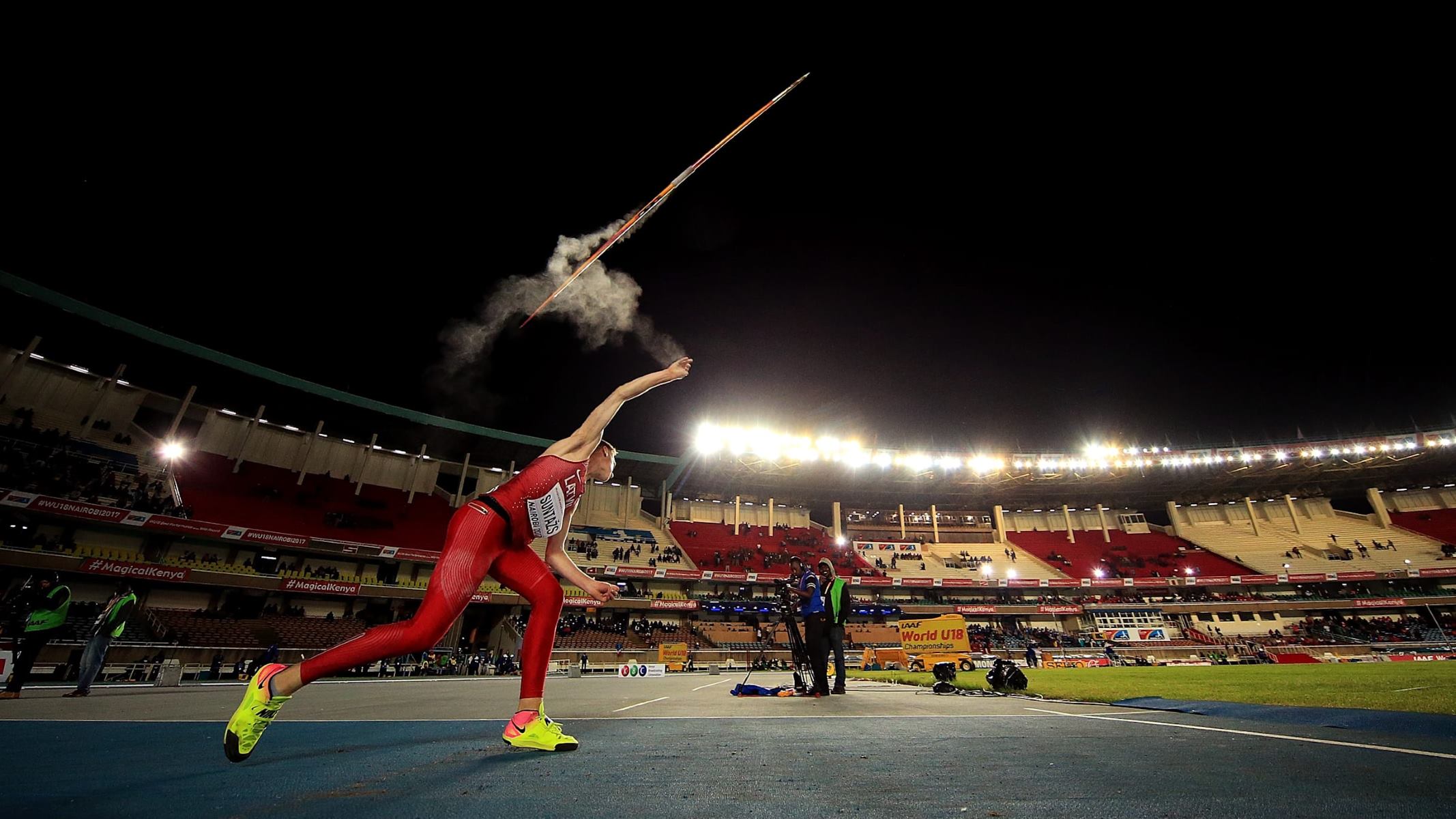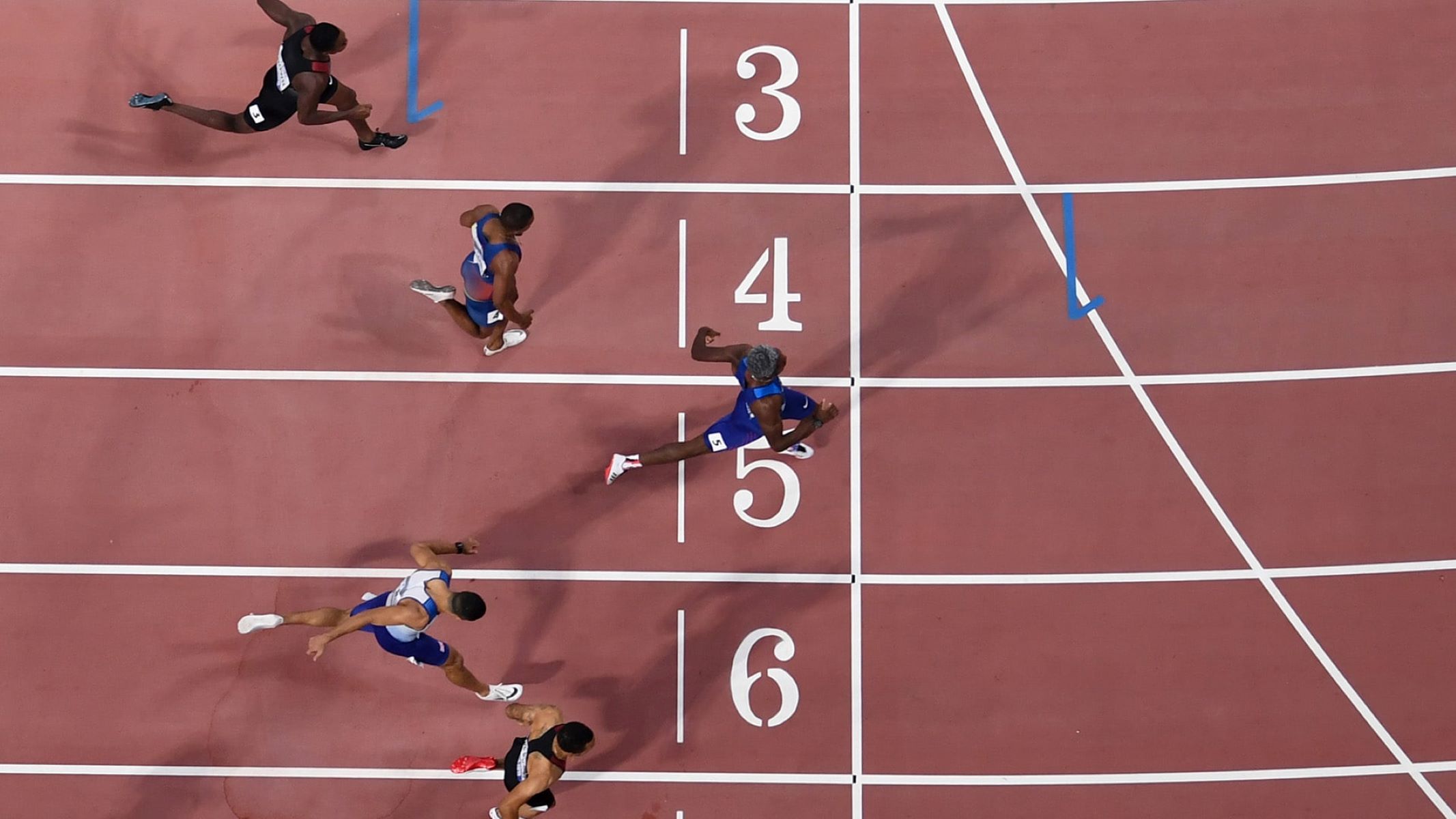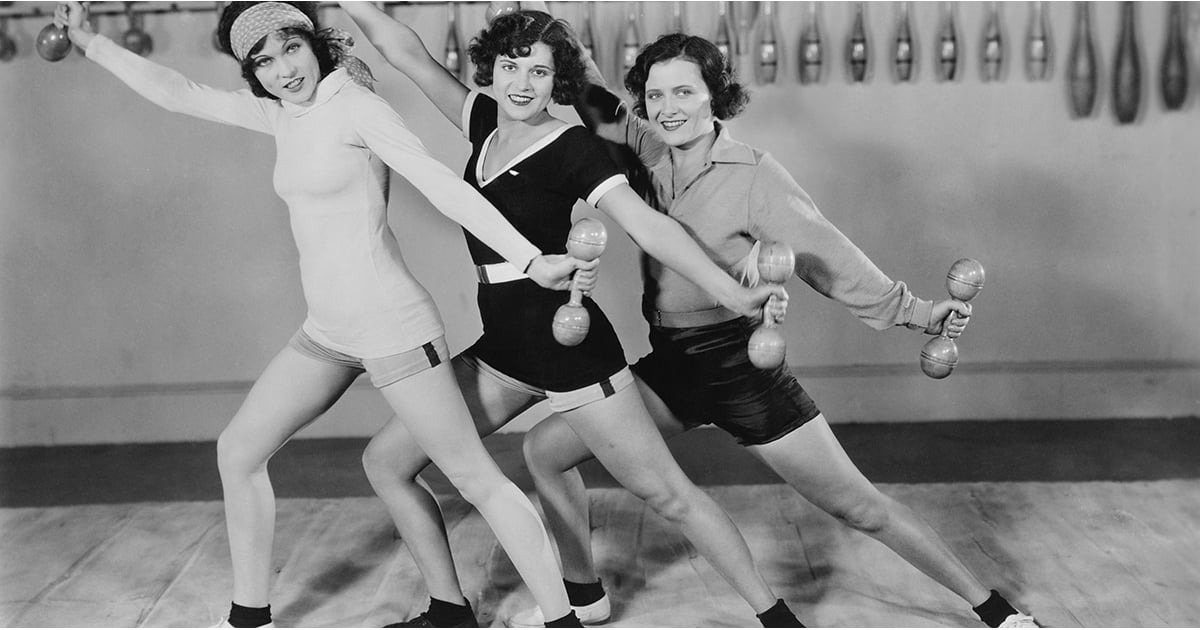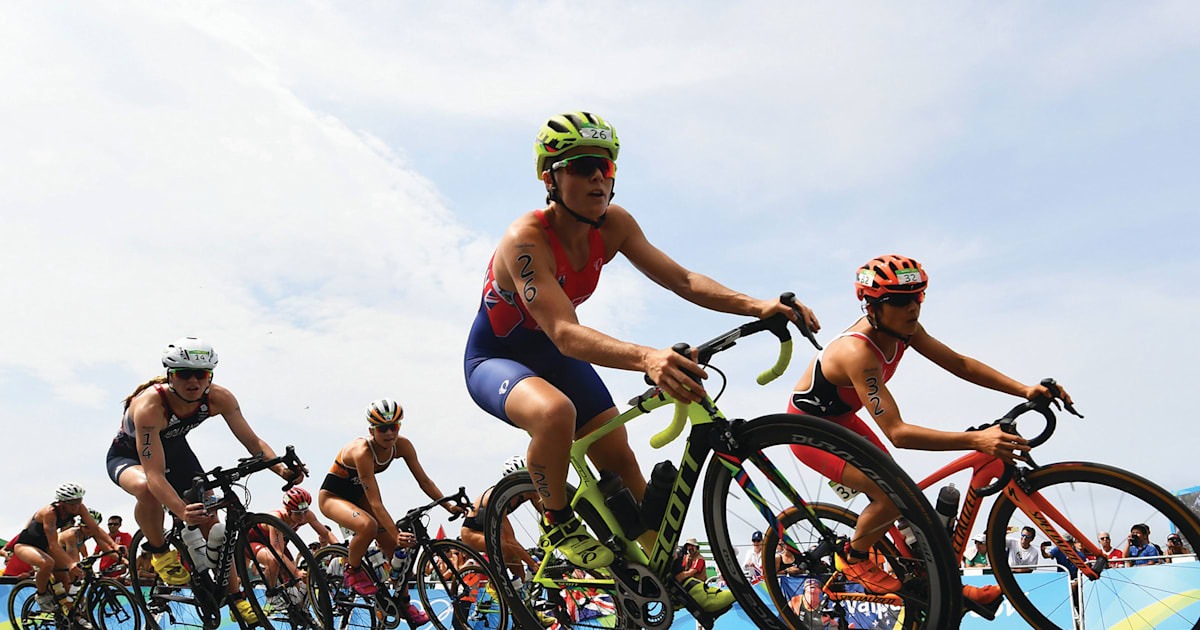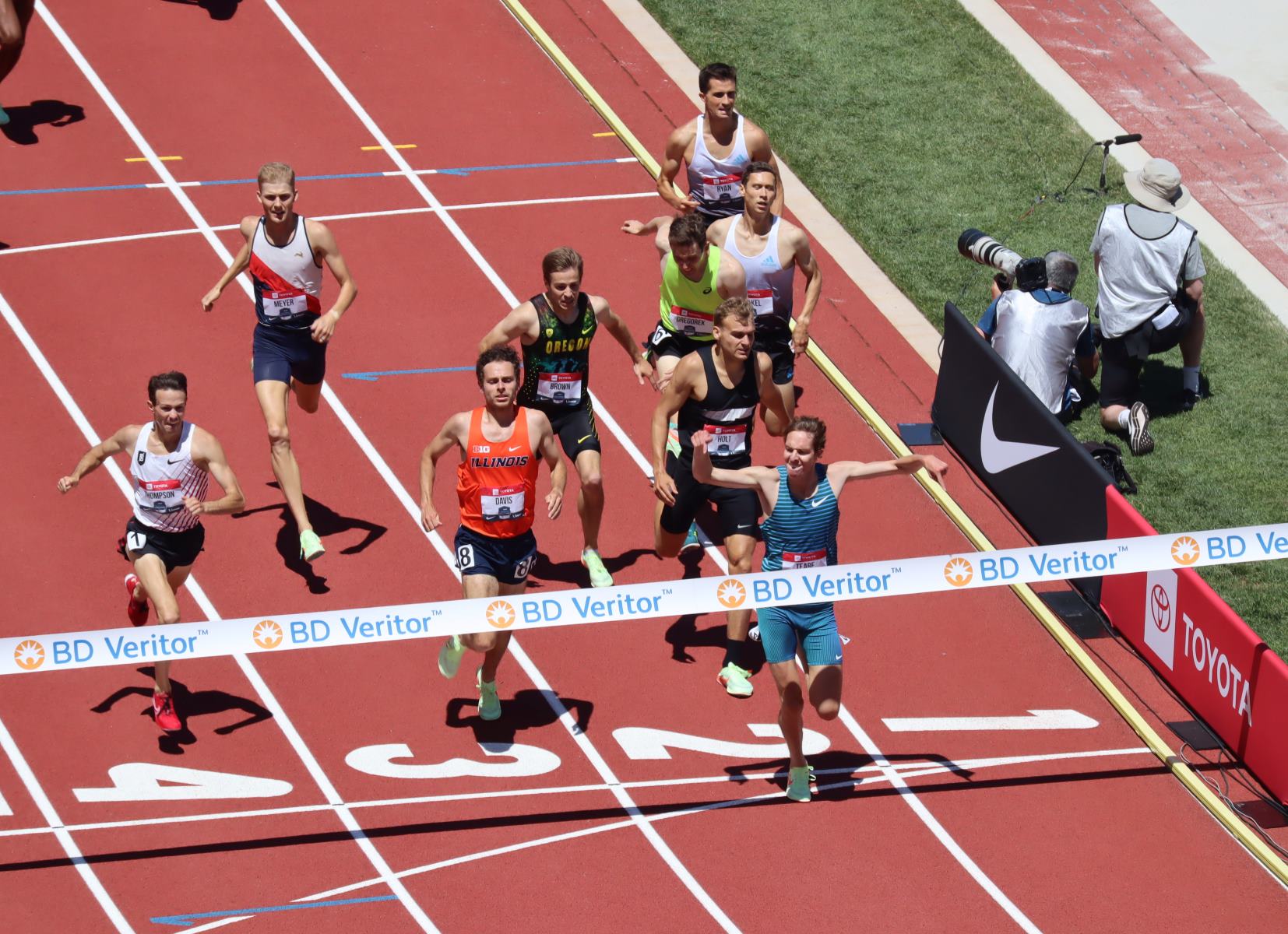Home>Misc>Featured>What Track And Field Events Did Modern Day Olympics Have
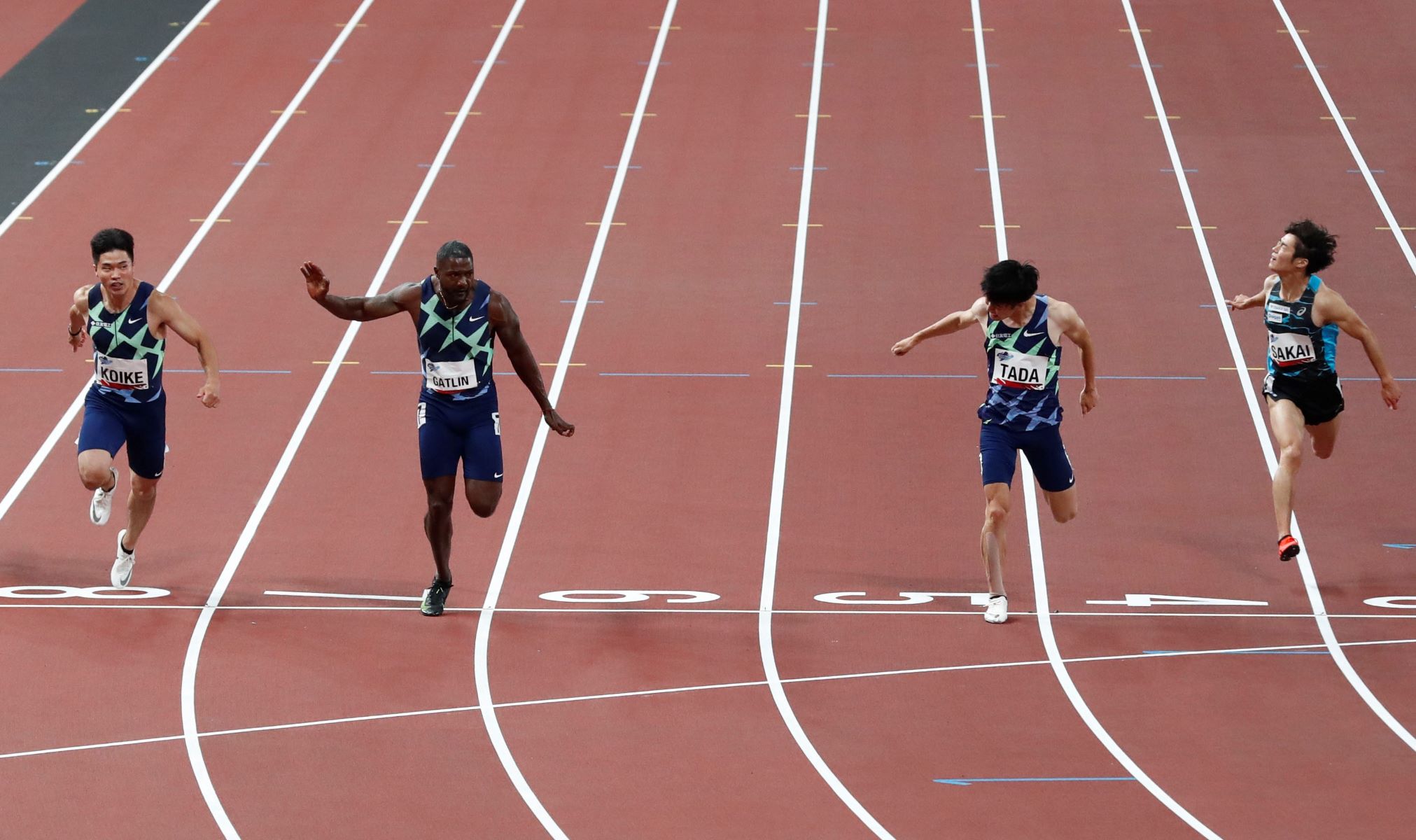

Featured
What Track And Field Events Did Modern Day Olympics Have
Modified: January 2, 2024
Discover the featured track and field events at the modern-day Olympics. Explore the excitement and athleticism of these iconic sports competitions.
Introduction
Track and field events have been a part of the modern-day Olympic Games since their inception in 1896. These events encompass a wide range of athletic disciplines, from sprinting and distance running to jumps, throws, and combined events. The inclusion of track and field events in the Olympics showcases the epitome of human strength, speed, and endurance, as athletes from across the globe compete to achieve greatness.
The modern-day Olympic track and field events are a testament to the evolution of athletic performance and the pursuit of breaking records. Over the years, new events have been introduced, and existing ones have been refined to provide both spectators and competitors with a thrilling and memorable experience. From the lightning-fast speed of sprinters racing down the track to the graceful and powerful movements of high jumpers soaring over the bar, each discipline brings its own unique excitement to the Olympic stage.
These events not only showcase the individual skill and dedication of athletes but also embody the spirit of healthy competition and sportsmanship. Track and field events in the Olympics inspire and motivate athletes, amateurs, and spectators alike to push their limits and strive for excellence.
Throughout the history of the modern Olympics, track and field events have become iconic and have produced legendary athletes such as Usain Bolt, Carl Lewis, and Jesse Owens. These events have become a symbol of human achievement and a celebration of athleticism, captivating audiences and leaving a lasting impact on the world of sports.
In this article, we will explore the various track and field events that have graced the modern-day Olympics. From the lightning-fast sprints to the challenging hurdles and exhilarating jumps and throws, each event will be examined in detail, highlighting the skills, strategies, and records associated with them. So let’s dive into the world of track and field events and witness the greatness that unfolds on the Olympic track.
Sprinting Events
Sprinting events are some of the most electrifying and highly anticipated competitions in track and field. These events showcase the pinnacle of speed and explosive power, with athletes pushing their bodies to the limit in a bid to cross the finish line first.
The most prestigious sprinting event in the Olympics is the 100-meter dash. This race is a true test of raw speed, with athletes exploding out of the starting blocks and reaching top speeds in a matter of seconds. Winning the gold in the 100-meter dash has long been regarded as the title of the fastest person on Earth. Some of the most memorable Olympic moments have occurred in this event, with legendary athletes such as Usain Bolt and Florence Griffith-Joyner setting world records and solidifying their status as sprinting icons.
Another highly anticipated sprinting event is the 200-meter dash. This race requires a combination of speed, endurance, and exceptional technique, as athletes navigate the curve before sprinting down the straightaway towards the finish line. The 200-meter dash allows for a more strategic approach, with athletes timing their acceleration and maintaining momentum to secure victory.
The relay races further amplify the excitement of sprinting events. The 4×100-meter relay and the 4×400-meter relay involve teams of four athletes, each running a specified distance before passing the baton to the next team member. These races not only require individual speed but also demand seamless baton exchanges and effective teamwork. The relay races often produce nail-biting finishes and intense competition as teams strive to outpace their rivals.
Speed is not the only component of sprinting events; running technique and start are equally important. Athletes must master the art of the sprinter’s start, ensuring a lightning-fast reaction time and explosive first steps. The biomechanics of sprinting involve maintaining proper form, generating power from the hips, and maximizing stride length and frequency.
The sprinting events in the Olympics capture the essence of sheer speed and athleticism, leaving spectators in awe of the incredible talent on display. Whether it’s the explosive bursts of energy in the 100-meter dash, the sheer determination in the 200-meter race, or the team dynamics in the relay events, these events provide moments of exhilaration and heroism that define the Olympic spirit.
Distance Events
Distance events in track and field are a true test of endurance, requiring athletes to push their bodies to the limits and maintain a consistent pace over long distances. These races showcase the mental and physical stamina of the participants and often result in thrilling finishes that captivate audiences around the world.
One of the most prestigious distance events in the Olympics is the marathon. The marathon covers the grueling distance of 26.2 miles (42.195 kilometers) and is a true display of endurance and perseverance. Athletes embark on a challenging course that tests their physical and mental strength as they tackle hills, uneven terrain, and varying weather conditions. Crossing the finish line of the marathon represents the ultimate accomplishment for many athletes, symbolizing the triumph of the human spirit.
In addition to the marathon, the Olympics also feature middle-distance races such as the 800 meters, 1,500 meters, and 5,000 meters. These races require a combination of speed and endurance, with athletes strategizing when to make their moves and unleash their final bursts of speed. The tactics used in these events often involve positioning, timing, and tactical racing, as athletes aim to conserve energy while maintaining a competitive pace.
Distance events demand meticulous pacing strategies, as athletes must find the balance between conserving energy and maintaining a swift pace. Endurance training plays a vital role in preparing for these events, with athletes carefully building their stamina and conditioning their bodies to handle the physical demands of long-distance running.
Despite the physical and mental challenges, distance events in track and field continue to captivate audiences with their displays of resilience and determination. The athletes who excel in these races showcase not only their physical abilities but also their unwavering willpower and mental fortitude.
Whether it’s the epic battle for the gold in the marathon or the strategic maneuvering in middle-distance races, distance events in the Olympics provide a thrilling showcase of human endurance. These events remind us of the remarkable capabilities of the human body and the triumph that can be achieved through perseverance.
Hurdles and Steeplechase
Hurdles and steeplechase events in track and field combine speed, agility, and hurdling technique, showcasing the athleticism and precision of the athletes. These events require competitors to navigate over barriers or water jumps, adding an additional layer of challenge and excitement to the races.
The hurdles events consist of various distances, including the 100 meters, 110 meters, and 400 meters. Athletes must sprint at high speeds, rhythmically clearing each hurdle along the track. The height and spacing of the hurdles differ based on the event, demanding quick reflexes and flawless technique. Clearing the hurdles efficiently while maintaining momentum is key in these events, with the slightest misstep potentially costing precious time and momentum.
As for the steeplechase, it is a 3,000-meter race that incorporates both water jumps and hurdles. Athletes face the challenge of maintaining their speed, jumping over a series of barriers, and navigating water pits. The steeplechase demands an exceptional combination of endurance, agility, and hurdling skill. Athletes must overcome physical and mental obstacles while maintaining a consistent pace throughout the race.
Competitors in hurdles and steeplechase events must possess excellent technique and timing. Efficient hurdling involves properly clearing the barriers without disrupting the running rhythm. It requires precise footwork, knee lift, arm coordination, and balance. Athletes must strike a delicate balance between speed and control to shave off vital seconds from their times.
The hurdles and steeplechase events showcase the grace, athleticism, and versatility of track and field athletes. The fluidity of motion as athletes elegantly clear barriers or jump over water pits captivates spectators and highlights the beauty of these events.
Watching athletes flawlessly execute hurdle jumps or skillfully navigate water jumps in the steeplechase provides a thrilling spectacle. These events require not only physical prowess but also mental focus and determination. Athletes who excel in hurdles and steeplechase races inspire us with their ability to conquer obstacles, both literal and metaphorical, as they strive for victory.
Hurdles and steeplechase events add an element of excitement and drama to track and field, as athletes overcome barriers and push their limits in pursuit of greatness. These events celebrate the athleticism and skill required to navigate obstacles while maintaining speed, ensuring that fans are treated to exhilarating displays of athleticism.
Relay Races
Relay races are thrilling and dynamic events that require both individual skill and seamless teamwork. In these races, athletes work together as a team, passing the baton from one runner to the next in a precise and timely manner, all while maintaining incredible speed and momentum.
There are two main relay races in track and field: the 4×100-meter relay and the 4×400-meter relay. In the 4×100-meter relay, four athletes each run 100 meters before passing the baton to the next team member. The speed and accuracy of the baton exchange are critical, as the slightest fumble can cost valuable time and hinder the chances of winning. The 4×400-meter relay follows a similar format but with each athlete covering 400 meters, showcasing a combination of speed and endurance.
Relay races require a high level of coordination, communication, and teamwork. The exchanges of the baton are crucial moments in the race, with athletes honing their skills to ensure smooth and efficient handoffs. The baton must be passed within a designated zone, adding an element of precision and timing to the event. Each runner must time their approach, reach full speed at the handoff, and extend their hand at the perfect moment for a successful exchange.
Relay races often produce some of the most intense and exhilarating moments in track and field competitions. Teams can make up ground or lose the lead within seconds, creating an atmosphere of anticipation and suspense. The final sprint to the finish line, as the anchor leg runner gives their all to secure victory for their team, is a spectacle that remains etched in the minds of spectators.
Relay races epitomize the essence of teamwork and camaraderie in sports. The success of the team relies not only on individual speed but also on the ability to work together seamlessly. Athletes must trust their teammates, communicate effectively, and execute flawless baton exchanges to maximize their chances of victory. Winning a relay race is a collective accomplishment, with each member contributing their skills and teamwork to achieve a common goal.
The excitement and drama of relay races bring a unique dynamic to track and field, captivating audiences with their fast-paced action and tight competition. These events demonstrate the power of collaboration and cooperation, reminding us that success often comes from working together towards a shared objective.
Jumps
The jumping events in track and field showcase the extraordinary athleticism, technique, and grace of the athletes. These events demand explosive power, precise timing, and exceptional body control as competitors aim to achieve record-breaking heights and distances.
The high jump is a captivating event where athletes must clear a horizontal bar placed at increasing heights. Athletes utilize various techniques, such as the straddle, scissors, or the more modern and popular Fosbury Flop, to propel themselves over the bar. The high jump requires a combination of speed, agility, and flexibility, as athletes must contort their bodies to clear the bar without dislodging it.
Triple jump and long jump events showcase the athletes’ ability to generate speed and deliver explosive jumps. These events require athletes to sprint down the runway with precision, launch themselves into the air, and then land in a sandpit. The distance is measured from the take-off point to the landing spot. Athletes must perfect their takeoff technique, known as the hop, step, and jump sequence, to maximize their distance and secure higher scores.
Pole vaulting is another thrilling jumping event that combines speed, agility, and technical proficiency. Athletes use a flexible fiberglass pole to propel themselves over a bar set at increasingly higher heights. The pole vault requires not only incredible strength and flexibility but also precise positioning and timing to achieve a successful clearance. As athletes soar over the bar, their bodies arching gracefully, it creates a visually stunning display of athleticism.
Jumping events not only require explosive power and technique but also mental composure. Athletes must remain focused and composed during their approach and execution to perform at their best. The margin for error is slim, as miscalculations or missteps can result in failed attempts or injuries.
Watching athletes defy gravity in the jumping events is awe-inspiring. The ability to soar to great heights or distance showcases the incredible capabilities of the human body. These events captivate audiences with their combination of athleticism, precision, and sheer spectacle.
Achieving impressive heights and distances in the jumps events requires a meticulous approach to training. Athletes must hone their technique, increase their strength, and perfect their timing through countless hours of practice. They strive to push the boundaries of what is possible, constantly aiming to break records and achieve new heights.
The jumping events in track and field are a testament to the athleticism and skill of the competitors. With each jump, athletes push their physical and mental limits, leaving spectators in awe of their extraordinary abilities. These events highlight the beauty of human movement and the pursuit of excellence in track and field.
Throws
The throwing events in track and field are a display of sheer strength, precision, and technique. These events showcase the ability of athletes to propel various objects, such as shot put, discus, javelin, and hammer, incredible distances with accuracy and power.
The shot put involves athletes throwing a heavy spherical object known as the shot put, using a pushing or spinning technique. The shot put requires immense upper body strength and explosive power as athletes generate momentum to release the shot put as far as possible. The distance achieved is measured from the throwing circle to the point of landing.
Discus throwing involves athletes spinning in a circle and releasing a flat, disc-shaped object called a discus. The objective is to achieve maximum distance by generating speed and rotational force during the throw. The discus must be released within a designated throwing sector, and the distance is measured from the point of landing to the inner circle of the throwing sector.
The javelin throw consists of athletes hurling a long, spear-like apparatus known as the javelin. This event requires a combination of speed, technique, and strength as athletes generate momentum and project the javelin into the air. The javelin must be thrown within the designated throwing sector, and the distance is measured from the point of landing to the inner edge of the throwing sector.
Hammer throwing is a unique event where athletes spin and release a metal ball and chain, known as a hammer. The hammer is propelled using centrifugal force generated through rotational movement. Athletes must maintain control and balance throughout the spinning motion while projecting the hammer as far as possible.
Throws events require not only raw power but also proper technique, footwork, and body positioning. Athletes must develop sound biomechanics to efficiently transfer the generated force into each throw. The ability to generate speed, torque, and release at the optimal angle is crucial in achieving greater distances.
Throwing events showcase athletes with exceptional upper body strength, explosive power, and coordination. With each throw, they strive to achieve new personal bests, break records, and outperform their competitors. The throws events captivate spectators with their displays of raw strength and precision.
Training for throws events involves a combination of strength training, technique work, and specific drills to develop explosive power and refine throwing mechanics. Athletes must also focus on improving their flexibility and agility to enhance their throwing ability further.
Throws events in track and field represent the epitome of power and precision. Athletes must harness their physical prowess and technical mastery to achieve impressive distances with accuracy. These events demonstrate the remarkable capabilities of the human body and the determination required to excel in the throws.
Combined Events
The combined events in track and field, also known as multi-events or heptathlon for women and decathlon for men, are ultimate tests of all-around athleticism and versatility. These events require athletes to compete in multiple disciplines, pushing their bodies to the limit and showcasing a wide range of skills.
The decathlon consists of ten events spread over two days for men, including the 100-meter dash, long jump, shot put, high jump, 400 meters, 110-meter hurdles, discus throw, pole vault, javelin throw, and 1500 meters. Each performance in the respective events is scored based on a standard scoring system, with athletes accumulating points for their performances. The decathlon requires a combination of speed, power, agility, endurance, and technical skill as athletes compete to achieve the highest cumulative score.
On the other hand, the heptathlon for women consists of seven events: the 100-meter hurdles, high jump, shot put, 200 meters, long jump, javelin throw, and 800 meters. These events measure a diverse range of athletic abilities, and participants must excel across various disciplines to excel in the heptathlon.
The combined events demand athletes to be well-rounded, as they must train and excel in multiple events that require different physical attributes and technical skills. Athletes must carefully balance their training to prepare for each event while avoiding fatigue or injury. Mental resilience is crucial in these events, as athletes must maintain focus and perform consistently across all disciplines.
Competing in multi-events requires careful planning and strategy, as athletes must decide when to push their limits and when to conserve energy. They must monitor their performances and adjust their approach depending on their scores and the performances of their competitors.
The combined events in track and field are a true test of an athlete’s versatility and all-around ability. Competitors must showcase their expertise in various disciplines while maintaining overall stamina and mental fortitude. These events provide spectators with a captivating display of athleticism and a rollercoaster of emotions as athletes strive to accumulate points and claim victory.
Success in combined events often requires years of dedicated training and development in multiple disciplines. Athletes must possess a strong work ethic, discipline, and resilience to excel in these demanding events. The decathlon and heptathlon celebrate the complete athlete, one who can excel in a multitude of events and conquer the challenges of multi-disciplinary competition.
The combined events have produced remarkable athletes who have become legends in the sport, showcasing their versatility and all-around skill. These events highlight the extraordinary achievements and capabilities of athletes who excel in multiple disciplines, earning them a place among the most respected and revered individuals in the world of track and field.
Conclusion
The track and field events in the modern-day Olympics represent the pinnacle of human athleticism, determination, and excellence. From the lightning-fast sprints to the graceful jumps, from the endurance-testing distance events to the precision-based throws, each event showcases the unique talents and skills of athletes from around the world.
These events captivate spectators with their displays of raw power, speed, agility, and finesse. They embody the spirit of competition, pushing athletes to continuously strive for greatness and reach new heights. The track and field events in the Olympics inspire individuals of all ages to pursue their athletic dreams and push their limits to achieve success.
Throughout the history of the modern Olympics, track and field events have produced countless memorable moments and iconic athletes. These events have seen records shattered, rivalries formed, and dreams come true. From Usain Bolt’s lightning-fast sprints to Jackie Joyner-Kersee’s dominant performances in multiple events, these athletes have etched their names in history and inspired generations to come.
The track and field events also symbolize the essence of unity and friendship, as athletes from diverse backgrounds come together on the same stage to compete and celebrate the true spirit of the Olympic Games. The values of sportsmanship, fair play, and camaraderie shine through, reminding us of the importance of mutual respect and cooperation.
Whether it’s the breathtaking speed of the sprinting events, the endurance and stamina of the distance races, the skill and technique of the jumps, or the power and precision of the throws, each track and field event brings its own unique excitement and has its own dedicated fanbase.
As we witness the remarkable performances in the track and field events of the Olympics, we are reminded of the incredible capabilities of the human body and the heights that can be achieved through dedication, hard work, and passion. These events inspire us to push ourselves, both athletically and in other aspects of life, to strive for greatness and make our own mark in the world.
Track and field events will continue to be a cornerstone of the Olympic Games, captivating audiences and providing a platform for athletes to showcase their talents on the global stage. These events will continue to celebrate the rich history, the incredible athleticism, and the unwavering spirit of competition that define the world of track and field.
